Nandina domestica
HEAVENLY BAMBOO
Family: Berberidaceae
Pronounced: nan-DEE-nah doe-MES-ti-kah
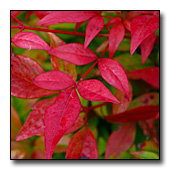
Quick Jumps
Growing Guide
Rainy Side Notes
GROWING GUIDE
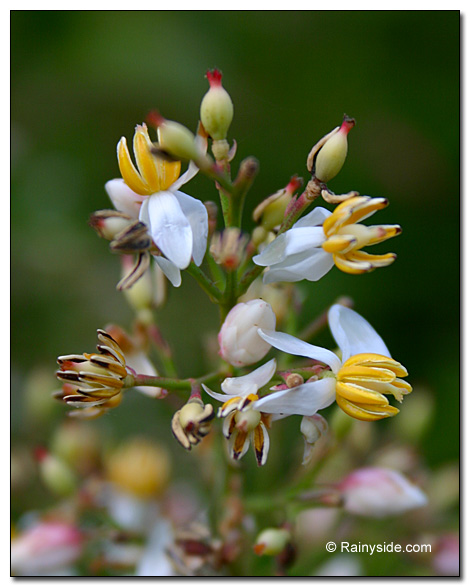
Origin:
Japan, China and India.
Plant Group:
Shrubs.
Hardiness:
Sunset zones: 3 (with protection) 4-24; H1, H2.
USDA zones: 6-9.
Mature size:
Height 6 feet (2 m).
Width: 5 feet (1.5 m).
Flowering period:
Late spring to early summer.
Flowering attributes:
Clusters of white to creamy, star-shaped flowers with yellow anthers.
Fruit:
Clusters of bright red, globular fruit.
Leaf attributes:
Evergreen, lance-shaped, alternate, bi- to tri-pennately compound, green leaves, that turn purple to bronze tints in autumn and winter.
Growth habit:
Upright.
Light:
Sun or light shade.
Soil:
Moist, well-drained soil.
Feeding:
Side-dress with compost in early spring.
Propagation Methods:
Sow fresh seed as soon as ripe. Old seed may take up to two years to germinate, fresh seed six to eight weeks. | Root semi-ripe cuttings in summer.
Pruning Methods:
Prune yearly in early spring, cutting the oldest canes down to the ground. This discourages the shrub from getting top heavy and falling over. The pruning will keep it growing a denser growth lower down on the shrub.
Pests and Diseases:
Infrequent problems.
Rainy Side Notes
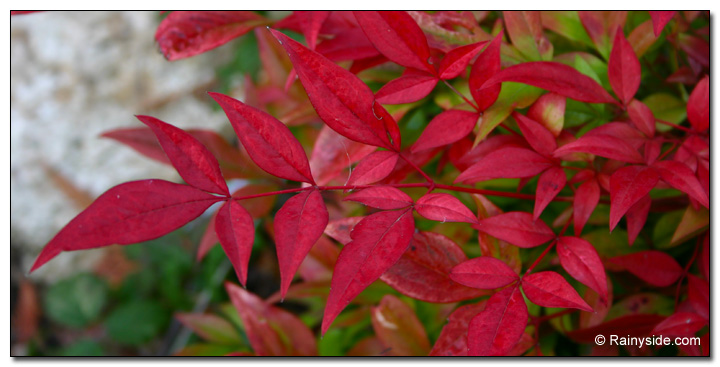
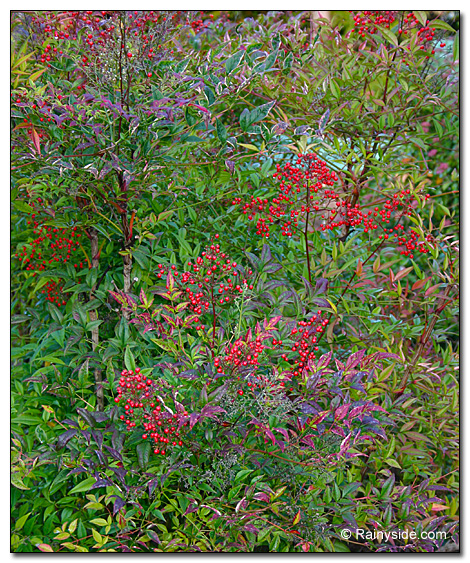
Nandina domestica is a remarkable evergreen shrub that adds a quiet beauty to the garden all year round, yet adds a dash of wonderful in fall and winter with colorful leaves and bright red berries. Its common name, Heavenly bamboo, describes its bamboo-like leaves and structure. Don't be mistaken though, it's not bamboo.
In our climate, the shrub is evergreen; however, it will lose its leaves when temperatures drop below 10°F or 12°C.
Nandina is a good choice for an airy hedge. Less pruning and just as colorful as a photinia, nandinas have the added bonus of bright red berries. If you want a colorful hedge but don't like the large leaves of photinias, a heavenly bamboo might be the answer.
Photographed in author's garden.

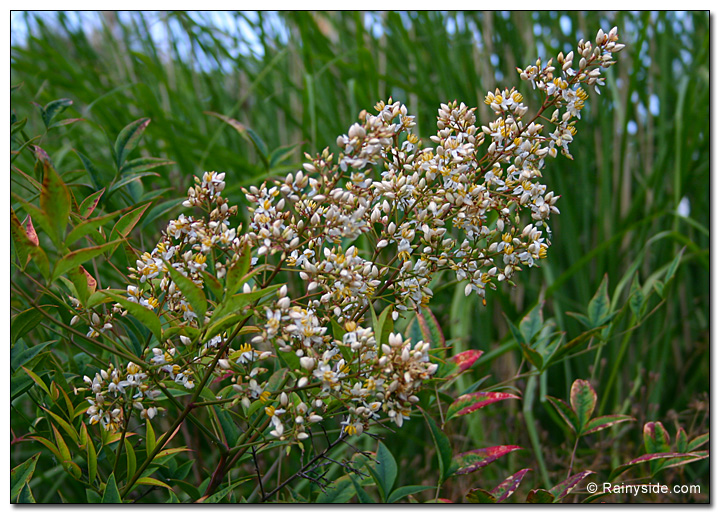

Gardening for the Homebrewer: Grow and Process Plants for Making Beer, Wine, Gruit, Cider, Perry, and More
By co-authors Debbie Teashon (Rainy Side Gardeners) and Wendy Tweton

